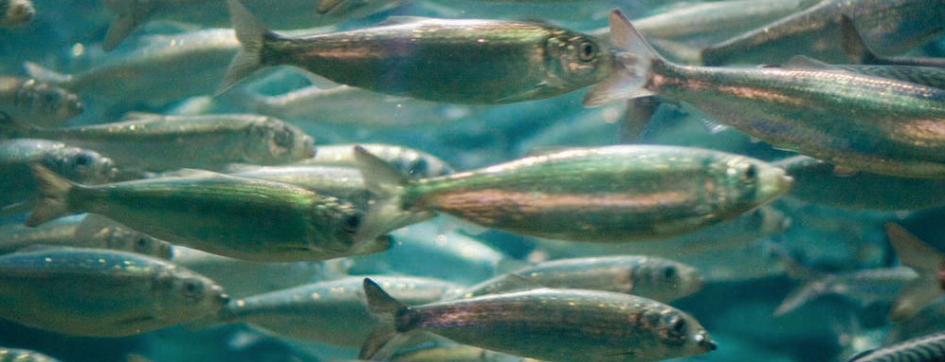||| FROM ELISE COPE for FRIENDS OF THE SAN JUANS |||
Have you ever seen a seabird with small, silvery and slender fish in its mouth? If you have, you have seen forage fish—most likely a Pacific sand lance. Essential players in the Salish Sea marine food web, sand lance are key prey for salmon, rockfish, seabirds, and many marine mammals. Sand lance are especially important in the diet of young salmon as they are often the first fish they can eat.
Friends of the San Juans recently completed a multi-year research project to identify which beaches Pacific sand lance lay their eggs on, or spawn on, in San Juan County. After an incredible effort over the course of four winters, Friends documented 12 new spawning sites, more than doubling the number of previously known sand lance spawning beaches in San Juan County from 9 to 21. Additionally, nine new surf smelt spawning sites were documented.
Sand lance spawn in the winter when low tides occur primarily at night and conditions are often too rough for boat-based fieldwork. This has limited the ability of scientists to document, and thus protect, these vitally important spawning beaches—but as the saying goes, “There’s no such thing as bad weather, only bad gear.” Each winter from 2018 to 2022, Friends staff and volunteers bundled up in their rain gear and boots, gathering sand samples from 175 beaches on 13 local islands. A total of 1,000 sand samples were gathered to later inspect for eggs.
As intertidal beach spawners, sand lance are especially vulnerable to the impacts of human-built structures on shorelines. These newly documented spawning sites will now receive greater local and state protections. Friends’ research will also be used to identify future sites for both protection and restoration actions that will support the marine food web, helping recover Chinook salmon and critically engaged Southern Resident killer whales.
This project was truly a community endeavor. Students from 6 islands, along with trained community science volunteers, contributed a total 900 hours. Over 275 students from Orcas Island High School, Spring Street International School, Waldron School, and Decatur School received training and participated in field surveys on their islands. Other partners include Dan Penttila of Salish Sea Biological, the Samish Indian Nation’s Natural Resources Department, and hundreds of shoreline landowners who provided beach access. The project was conducted in collaboration with the Washington Department of Fish and Wildlife (WDFW), with funding from the Washington State Salmon Recovery Funding Board, WDFW’s Aquatic Lands Enhancement Account, The Wheeler Foundation, and donors of Friends of the San Juans.
Background Information: Known Pacific Sand Lance Spawning Sites in San Juan County More Than Doubled
**If you are reading theOrcasonian for free, thank your fellow islanders. If you would like to support theOrcasonian CLICK HERE to set your modestly-priced, voluntary subscription. Otherwise, no worries; we’re happy to share with you.**









Many thanks to all who participate in these important surveys!
They are my heroes!
If I owned potential forage fish shoreline habitat, I would welcome the volunteers to take samples.
Boo to people who build bulkheads and other structures that screw up essential forage fish habitats.